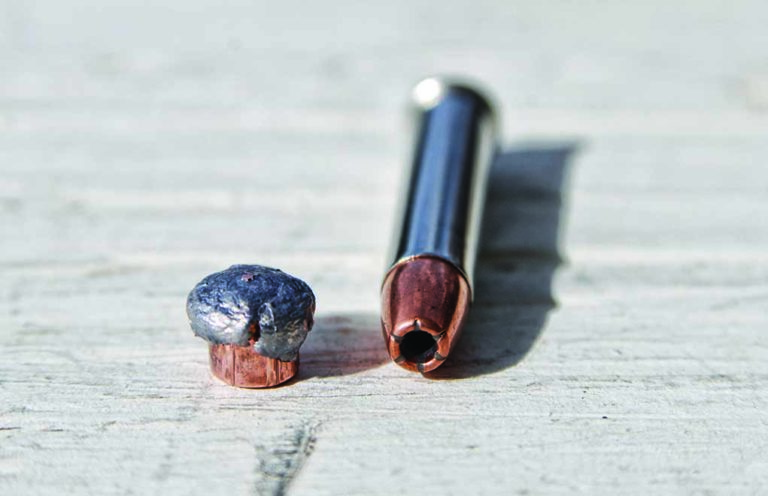
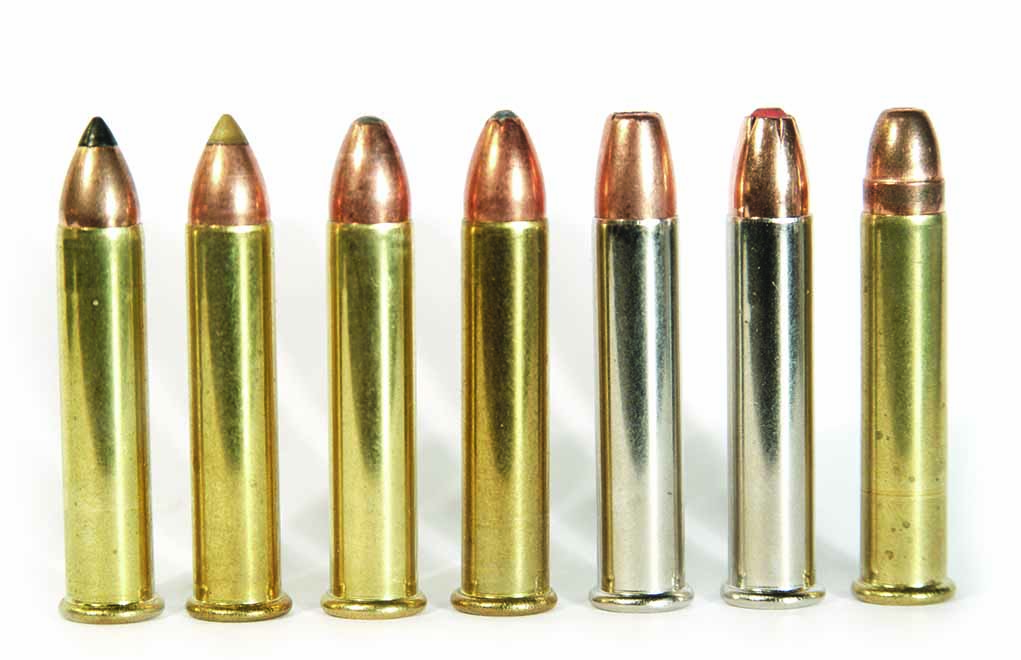
Versatile and potent, the .22 WMR—or .22 Mag—forever raised the rimfire enthusiasts' expectations for performance.
How The .22 WMR Improves On The .22 LR:
- Originally, the .22 WMR propelled a 40-grain bullet 1,900 fps at the muzzle.
- The corresponding muzzle energy at this velocity was 325 ft-lbs.
- At the same time, the cartridge produced little to no recoil.
- Additionally, its report is nearly as mild as a .22 LR.
The quest for improved performance has led to many new products.
Although the .22 Short came earlier, the .22 Long Rifle became far more popular because of its performance. Rifles in this caliber perform admirably for general shooting, pest control and small-game hunting. The .22 Long Rifle can dispatch larger game and varmints such as groundhogs, foxes and coyotes, but only with very carefully placed shots.
Before I had any centerfire rifles, I managed to reduce the groundhog population of some pastures with a rimfire shooting .22 LR ammunition, but I also saw some make it to their dens. Many varmint hunters have had the same results and wished for a more potent rimfire.
One incremental step along the way resulted in the .22 Winchester Rim Fire (WRF) cartridge. It uses a slightly larger case than the .22 LR and drives a 45-grain bullet at a muzzle velocity of 1,300 fps, giving a muzzle energy of almost 170 ft-lb.
Although no new rifles are currently produced in .22 WRF, the ammunition is still available from CCI and in special runs from Winchester. The .22 WRF is slightly more potent than high-velocity .22 LR loads but not enough to make it vastly more effective on larger pests.
Raising the Bar: The .22 WMR
In 1959, Winchester responded to the demand for a much more effective rimfire round and introduced the .22 Winchester Magnum Rimfire (WMR). Propelling a 40-grain jacketed bullet at a nominal velocity of more than 1,900 fps, the muzzle energy was approximately 325 ft-lb. This meant that rimfire shooters had available a legitimate varmint cartridge that did not detonate with a thunderclap or objectionable recoil.
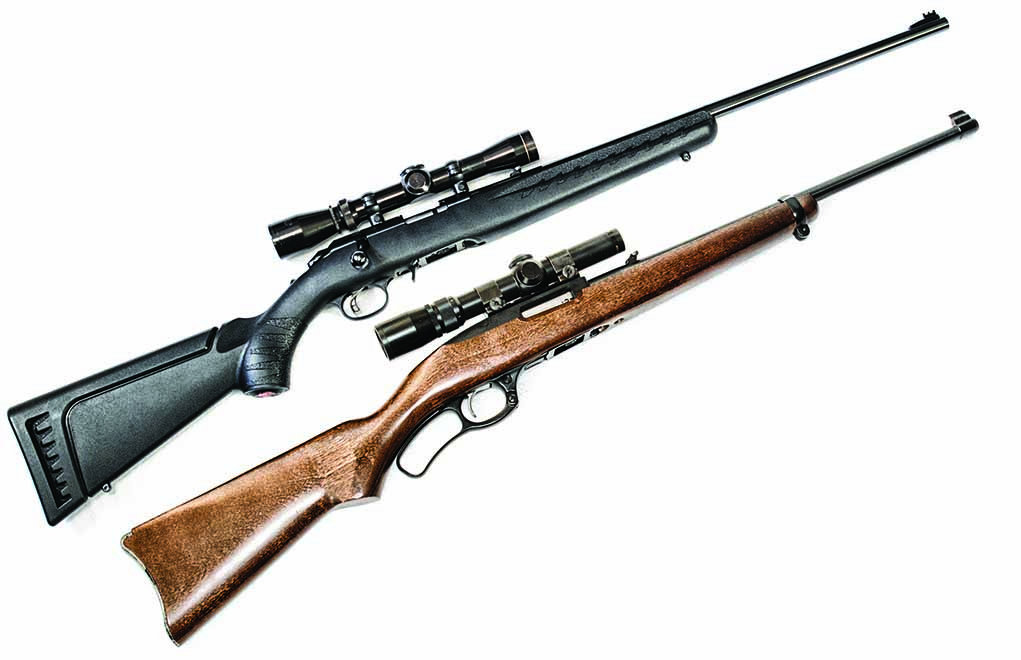
Clearly, the .22 WMR raised the level of rimfire performance to a new and much higher level. Winchester’s first rifle in .22 WMR caliber was the slick, little pump known as the Model 61. Later, Winchester produced the lever-action Model 94/22M, which, lamentably, is long gone and commands exorbitant prices because it’s highly collectable.
More Rimfire Info:
- Best .22 Ammo For Every Application
- The .22 LR: Mini, Mighty And Many
- The .22 LR And Its .22 Rimfire Cousins
- Cartridge Debate: .17 HMR vs. .17 WSM
- Ammo: Evolution of the Red-Hot .17 HMR
- The .22 LR For Self Defense: Good, Bad Or Crazy?
The .22 WMR utilizes a case of larger diameter and length, so not all rifles designed for the .22 LR can accommodate the larger cartridge. In particular, semi-automatics present special difficulties, and the number of such rifles has been small. Designers of auto-loading rifles must consider not only the maximum pressure achieved, but also the duration of higher pressure, etc. Such characteristics determine the velocity at which the breech bolt is driven to the rear—an important consideration.
Over its 60-year life span, many firearms that fire the .22 WMR cartridge have been produced. Ruger introduced the famous 10/22, chambered for the .22 WMR; however, it’s a vastly different rifle from the .22 LR version, which is constructed with a receiver made from an aluminum alloy.
To handle the larger, more potent .22 WMR, the Ruger 10/22 Magnum utilizes a steel receiver that’s more robust. This model has been discontinued, but Savage now offers the Model A22 semi-automatic, as do some smaller manufacturers, such as Volquartsen, Magnum Research and Tactical Solutions. Henry Repeating Arms makes a good lever-action alternative for those who didn’t add a Winchester 94/22M before it was discontinued.
.22 WMR's Broad Price Range
Because most shooters of .22 WMR rifles are varmint hunters, there’s more emphasis on accuracy than on rate of fire, so bolt-actions have been the major focus. In that regard, there’s been a reasonably extensive selection in a broad range of prices that are generally in the $270 to $300 range.
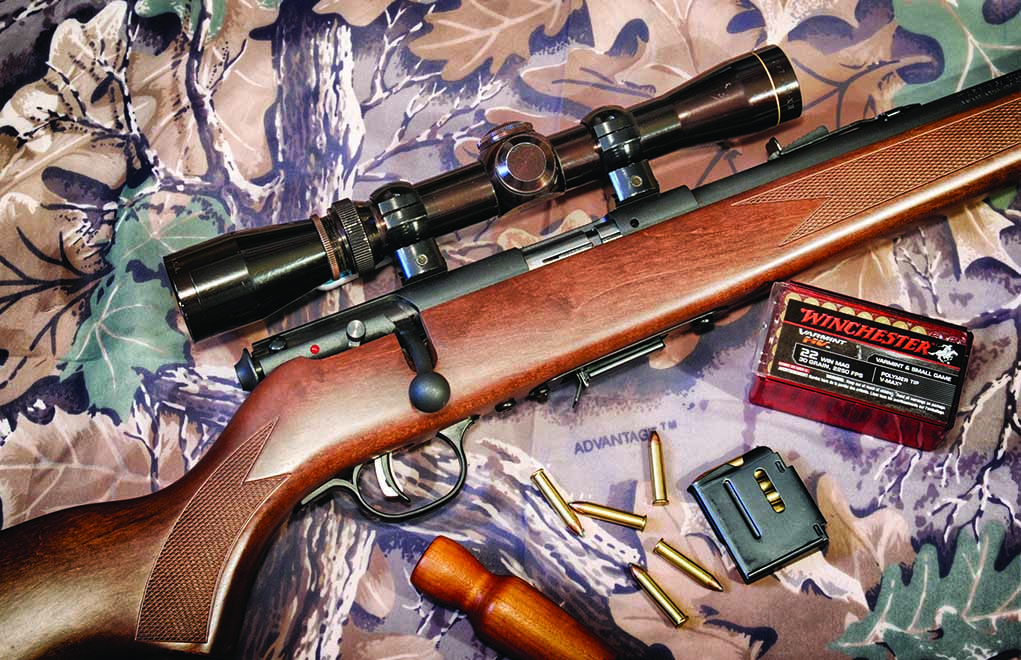
In the lower price category, some rifles are modestly priced yet give very good accuracy. In this group has long been the Marlin 25 series, which has morphed into the Model XT-22M. These rifles are available with either detachable or tubular magazines. Savage has offered numerous rifles in .22 WMR over the years, and the current Model 93 series consists of over a dozen variants that include models featuring stocks made of wood, polymer or laminate; a heavy- or standard-weight barrel; bluing or stainless steel, etc. My experience with an older Marlin 25M and a current Savage 93G indicates that they provide an excellent avenue to enter varmint hunting without sacrificing the bread money.
Another rifle in this category is the Ruger American, which features beautifully finished metal and a polymer stock. It’s available in both full-sized and compact models with a removable section of the stock that offers adjustable length of pull. My Ruger American is certainly accurate enough to make shots on varmints to at least 100 yards (which is about my limit for the .22 WMR). Top one of these moderately priced models from Marlin, Savage or Ruger with a scope of reasonable quality, and you’re equipped for pest-popping.
Moving up in price range are the rifles produced by CZ. The Model 455 permits changing barrels to make it possible to shoot .22 LR, .22 WMR or .17 HMR cartridges. The fixed-barrel 452 Models in .22 LR and .17 HMR were chosen by my wife to round out her rimfire battery, and they’re superbly accurate.
Further up the price ladder is the Ruger 77/22M, which is the magnum version of the 77/22 introduced in .22 LR in 1983. This rifle features a robust action that utilizes dual locking lugs and excellent styling, fit and finish, all of which are accompanied by an MSRP of $999. Until November 2009, the barrel was attached to the action by means of a wedge in a transverse groove in the underside of the barrel that was pulled tightly into the action by means of two large screws.
That meant the owner could easily remove the barrel and replace it with an aftermarket model. (Although my Ruger 77/22M performed quite well in stock configuration, I replaced the factory barrel with one of the Aluma-Lite barrels produced by Majestic Arms. It now gives groups of under an inch at 50 yards with almost any .22 WMR ammunition—and around half that size with some types.) The Model 77/22M was later produced with the barrel threaded into the action in the same manner as is used for centerfire rifles.
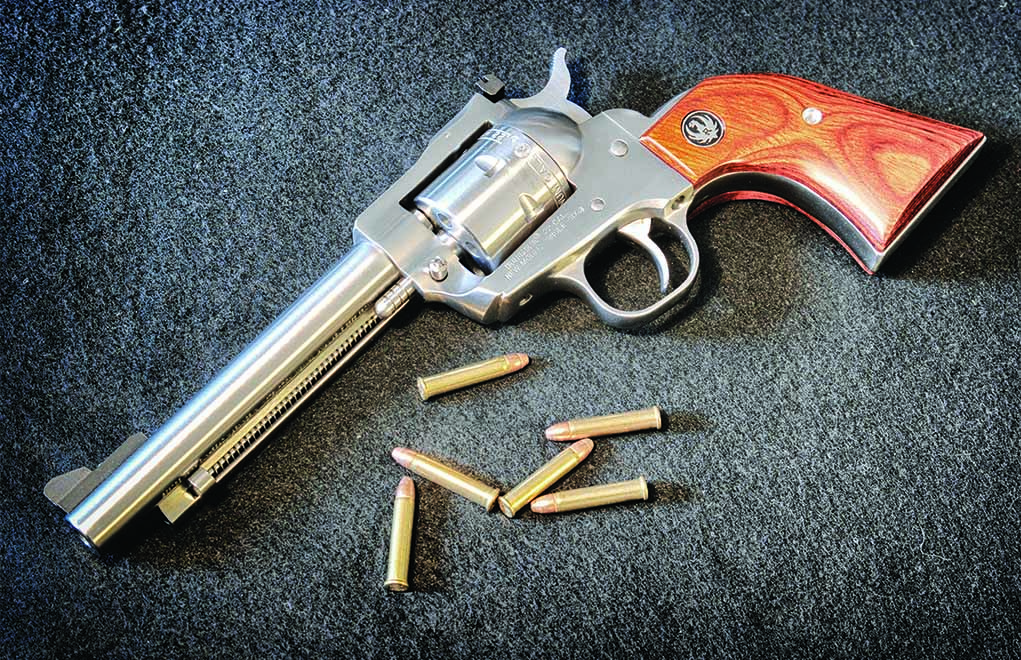
Handguns chambered for the .22 WMR should not be overlooked. Revolvers in both single- and double-action versions are available. These include some small models intended primarily for defense: the Ruger LCR, North American Arms, Charter Arms, Taurus and Smith & Wesson models. There’s also an auto-loader from Kel-Tec that holds 30 rounds.
When a round is fired from a handgun, the muzzle velocity is much lower than when the same load is fired from a rifle. For example, Hornady Critical Defense gives 1,800 fps from my Ruger 77/22M rifle but only 1,450 fps from the 5.5-inch barrel of my Ruger Security Six. This corresponds to 210 ft-lb of energy, so a .22 WMR handgun is rather potent—which is why several of those available are short-barreled revolvers intended for defense.
.22 WMR Ammo
For many years, .22 WMR ammunition was produced with 40-grain bullets of either hollow-point or full-metal-jacket design. The former was intended for expansion to provide good performance on varmints; the latter was meant to dispatch fur-bearers with minimum damage.
As is the case for ammunition in virtually all calibers, great changes have been made to .22 WMR ammo. The developments have resulted in the use of lighter bullets, with 30 grains being a popular weight and providing a muzzle velocity of around 2,200 fps. The result is bullets that give an explosive result on small critters.
Nevertheless, there’s no free lunch, and such bullets rapidly lose velocity. Most of the loads that feature 40-grain bullets give muzzle energies of approximately 310 to 325 ft-lb and 150 to 160 ft-lb at 100 yards. On the other hand, those with 30-grain bullets deliver only about 125 ft-lb at the longer range.
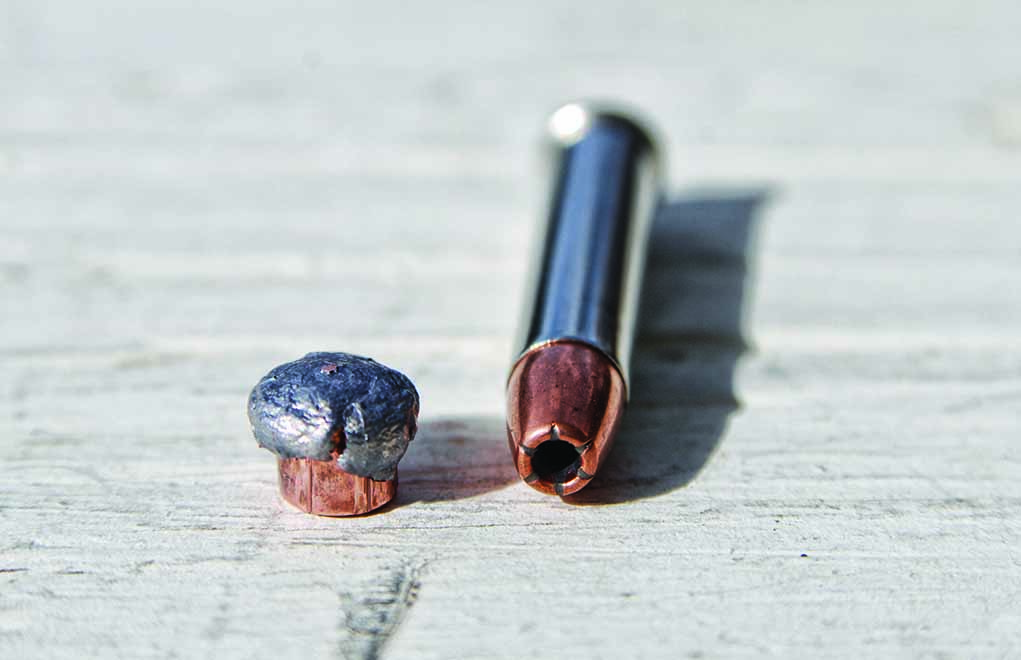
There’s no denying the explosive effect that results from higher velocity at short ranges, but shooters who tackle larger varmints should choose a heavier bullet.
One such load that’s been available for many years is from Federal. It features a 50-grain bullet with a muzzle velocity of only 1,530 fps, but it retains velocity better than the lighter bullets. Remington offers a load featuring a 33-grain polymer-tipped bullet with a nominal muzzle velocity of 2,000 fps, with the remaining velocity at 100 yards being almost 1,500 fps, giving a remaining energy of more than 160 ft-lb. The Remington ammunition has a good reputation for dropping larger varmints, as well as having a velocity that assures an explosive effect.
Ammo: Special Mention
Two .22 WMR loads are worthy of special mention, because they’ve been introduced with personal defense as the primary goal.
The Speer Gold Dot load features a 40-grain bullet with a large hollow-point. It assures expansion, even when fired from the short barrel of a handgun. Hornady has taken a somewhat different approach with the introduction of its Critical Defense load, which features a 45-grain bullet that utilizes a hollow-point with a polymer insert.
These .22 WMR loads are designed for expansion and performance rather than velocity. I’ve tested them in my Ruger Single Six Convertible, which has a 5.5-inch barrel, by firing them into jugs of water. I found them to perform superbly. Moreover, when fired from the 18.5-inch Majestic Arms barrel on my Ruger 77/22M, they are very accurate.
.22 WRF Versus .22 WMR
One convenient feature of the .22 WRF cartridge is that the external dimensions of the case are virtually identical to those for the .22 WMR—except for length. As a result, the shorter .22 WRF cartridges can be fired in a rifle chambered for the .22 WMR cartridge. I’ve done so for many years with excellent success and, at least in my rifles, the .22 WRF gives excellent accuracy.
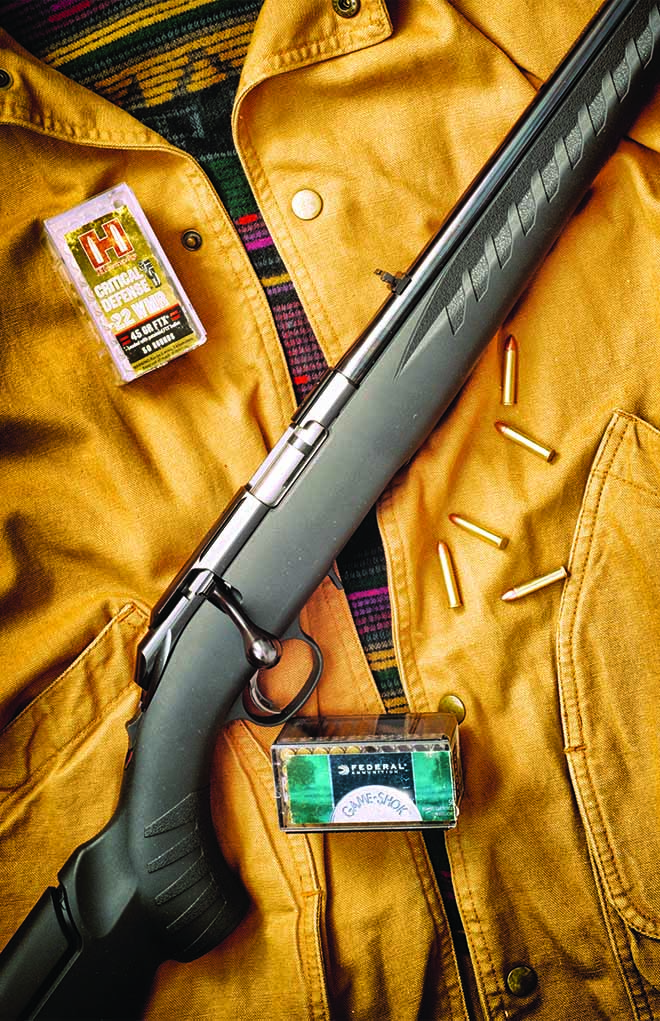
However, when sighted in for the .22 WMR ammo, the point of impact of a bullet from a .22 WRF cartridge is usually as much as 3 inches lower at 50 yards. The .22 WRF ammunition doesn’t represent an economic advantage: Being a specialty item, the cost is approximately the same as the .22 WMR products. The .22 WRF does, however, provide a useful alternative for shooters who want to achieve maximum versatility from their rifles.
The .22 WMR is a versatile and useful cartridge. It might not be ideal for use on varmints or for defense, but it can function in either way. My .22 WMR firearms get a lot of use, and I don’t plan to be without rifles or handguns in that caliber anytime soon.

Next Step: Get your FREE Printable Target Pack
Enhance your shooting precision with our 62 MOA Targets, perfect for rifles and handguns. Crafted in collaboration with Storm Tactical for accuracy and versatility.
Subscribe to the Gun Digest email newsletter and get your downloadable target pack sent straight to your inbox. Stay updated with the latest firearms info in the industry.

![Best Concealed Carry Guns In 2025 [Field Tested] Wilson Combat EDC X9S 1](https://gundigest.com/wp-content/uploads/Wilson-Combat-EDC-X9S-1-324x160.jpg)


![Best 9mm Carbine: Affordable PCCs [Tested] Ruger Carbine Shooting](https://gundigest.com/wp-content/uploads/Ruger-Carbine-Shooting-100x70.jpg)
![Best AR-15: Top Options Available Today [Field Tested] Harrington and Richardson PSA XM177E2 feature](https://gundigest.com/wp-content/uploads/Harrington-and-Richardson-PSA-XM177E2-feature-100x70.jpg)

Just now read your article. Highly underestimated .22, my father gave me Marlin model 980 back in 1962 for Christmas. Most accurate gun I’ve ever seen. Mounted a 3×9 Bushnell scope on it. For me, it’s one of those guns that falls into (if you can see it you can hit it categories). I’ve nailed varmints over 400 yards away regularly. Even had witnesses, though most are passed away now. I’d literally put it up against even some centerfires.
The Lever Action 94 is a Ruger not Winchester. I own 2 fortunately.
You may need glasses.
THANK YOU for this much needed article.
I love this powerful .22 rimfire round. I have both a RUGER 96/22 WMR lever gun (in your first rifle photo, BTW) and recently I got a 1980 manufacture RUGER Single Six revolver as a “companion” to my 96/22 WMR.
For a “Survival Round” the .22 WMR is much better than a .22 LR both in terms of hunting and defensive scenarios.